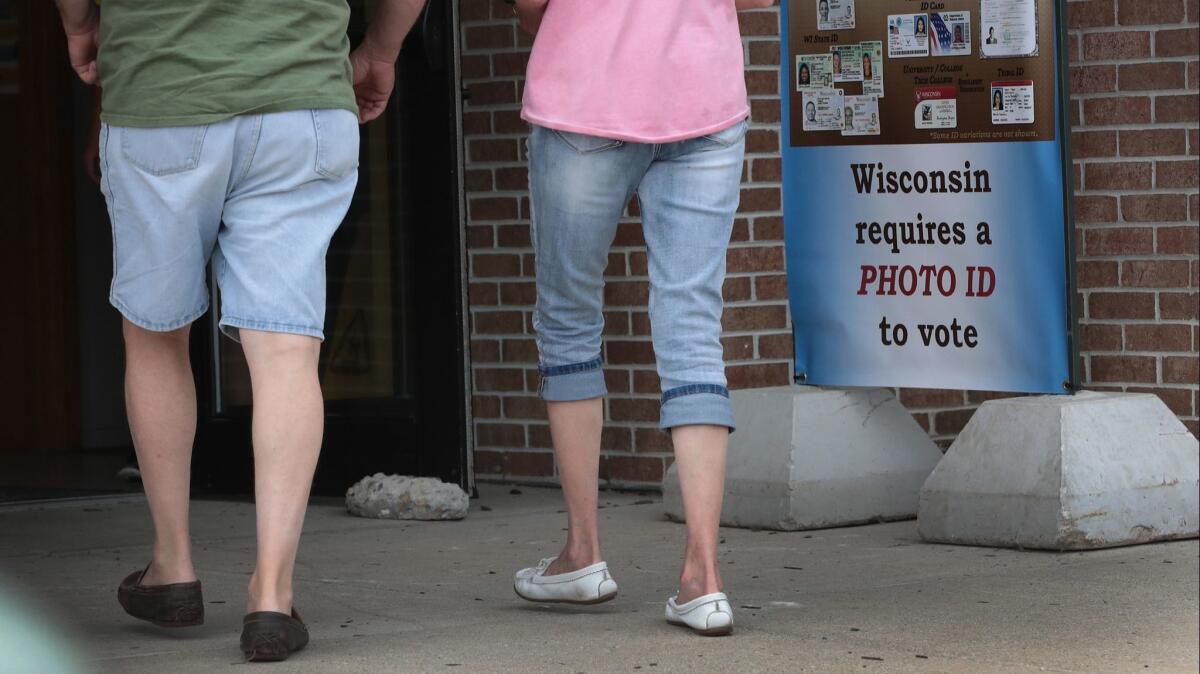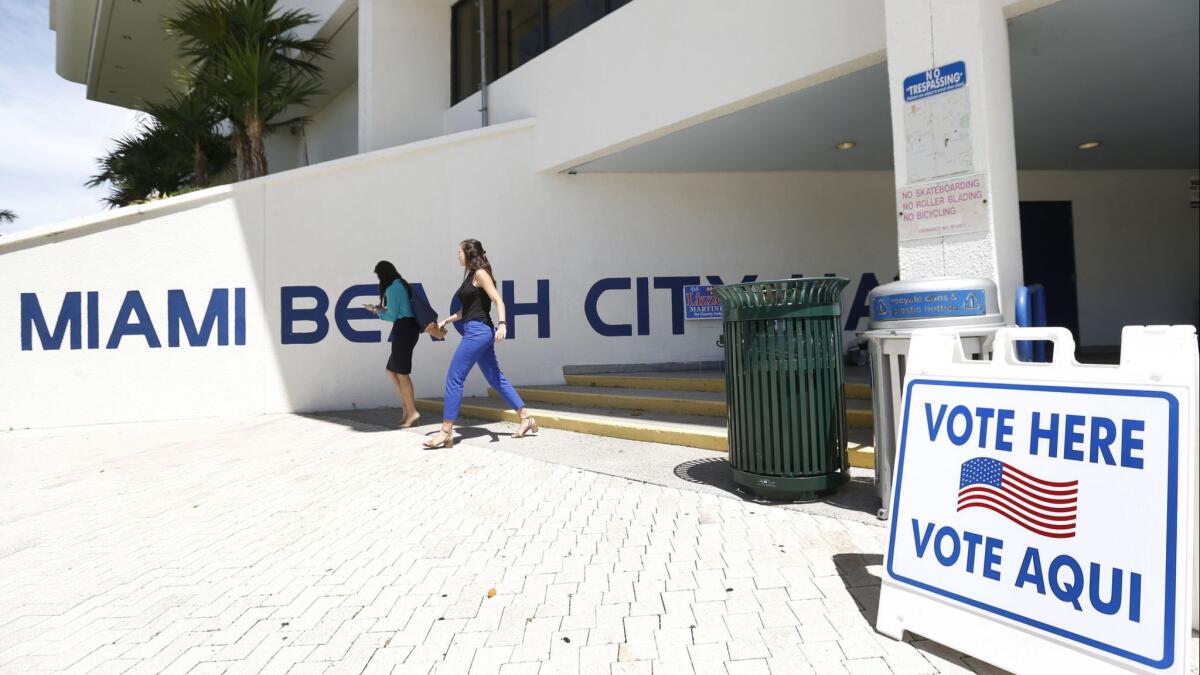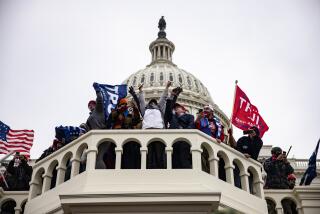A clear and troubling picture of voter disenfranchisement: ‘One Person, No Vote’
Near the end of “One Person, No Vote: How Voter Suppression Is Destroying Our Democracy,” Carol Anderson reminds us that “voting is neither an obstacle course nor a privilege. It’s a right.” Anderson offers this statement after demonstrating how, over the course of 120 years, the Mississippi Plan of 1890 has been cloaked, refitted and disseminated throughout the South and into Western and Midwestern states in an effort to stall or halt black, Latino, young and poor citizens from participating freely in American elections.
Made to be “intentionally racially discriminatory,” the Mississippi Plan was the umbrella phrase for “a dizzying array of poll taxes, literacy tests, understanding clauses, newfangled voter registration rules, and ‘good character’ clauses” arranged to erase the social, political and economic gains that African Americans had made during Reconstruction. Although the plan was announced as an attempt to return “ ‘integrity’ to the voting booth” following the late 19th century rise of Southern black political power, it actually delivered Jim Crow in full feather. Anderson calls the Mississippi Plan “legislative evil genius.”
“One Person, No Vote” is Anderson’s follow-up to “White Rage” (2016), her live wire case study of white America’s violent, retributive resistance to African Americans’ fighting for, acquiring and enacting citizenship in full. The Charles Howard Candler professor of African American Studies at Emory University, Anderson has a gift for illustrating how specific historical injustices have repercussive, detrimental influence on contemporary American life.
In “One Person, Not Vote’s” introductory chapter, she scribes a condensed but potent history of disfranchisement in American democracy from Reconstruction’s ending in 1877 to the Voting Rights Act of 1965 (VRA) to the Supreme Court of the United States decision in “Shelby County, Alabama v. Eric Holder, Jr. Attorney General” from 2013.
Anderson’s historical survey undergirds her close study of voter ID laws, gerrymandering and voter roll purges in the subsequent chapters. All three policy concepts are actually tactics from the Mississippi Plan transposed into the key of 21st century American politics. The VRA was established to ensure access to the ballot for all American citizens by targeting systemic corruptions like the Mississippi Plan and its offshoot elements as unconstitutional.
After the VRA was signed into law in 1965, states and municipalities across the country (but especially in the South) attempted procedural changes that wound up obstructing African Americans’ or Latinos’ access to the ballot or the impact of their voting. The Department of Justice used two parts of the VRA to protect voters and promote fuller participation: Section 4, which established a formula for determining the areas of the country where racial discrimination at the ballot box was most prevalent and where policy changes are intentionally racist, providing strict remedies for such illegalities when appropriate; and Section 5, the “preclearance” clause which freezes changes in election practices or procedures in covered jurisdictions until newly designed ones have been either reviewed by the U.S. attorney general or after a lawsuit has been filed before the district court of Washington, D.C.
Since the VRA’s passage, Section 5 has been the Justice Department’s strongest tool in defense of the voting franchise. However, Jim Crow-era impediments have begun appearing again in reconfigured forms because states no longer worry about Sections 4 or 5. In “Shelby v. Holder,” Supreme Court Chief Justice John Roberts, arguing for the majority, held that VRA Section 4 is unconstitutional because: (1) States cannot maintain their sovereignty or their 10th Amendment right to regulate their own elections if they must preclear their laws with the federal government and (2) “blatantly discriminatory evasions of federal decrees are rare.”
Because the VRA had 45 years of hard-won successes, the SCOTUS majority agreed that racist structures and intentions had been dispatched from the voting process and states need not beseech the federal government for “preclearance” any longer. And yet, as Anderson points out in “One Person,” after the Shelby decision, Republican-controlled states’ legislatures began making it harder for people of color and poor people to vote. “Once Alabama was freed from the oversight of the VRA and preclearance,” writes Anderson, “every twist and turn of the assault on voting rights was mobilized to go after black and poor folk, which the state had in abundance.”

Through voter ID laws in Wisconsin, Indiana and Texas, Anderson explains, the GOP has tried “to reduce significantly the demographic and political impact of a growing share of the American electorate. To diminish the ability of blacks, Latinos, and Asians, as well as the poor and students to choose government representatives and the types of policies they support. Unfortunately, it’s working.” She argues that because Republicans have acquired power through voter suppression rather than high-quality, effective policies for working people, citizens are denied both their rights and the “ ‘talisman’ of humanity that voting represents.” These policies arise from “a Republican vision of democracy that views most citizens as unwashed, ‘uninformed,’ and, therefore, unworthy” of that talisman. Anderson cites folks like Ann Coulter, Florida Gov. Rick Scott and Iowa congressman Steve King, the last of whom has wished nostalgically for “a time in American history when you had to be a male property owner in order to vote.”
Following the 2010 midterm elections, the GOP controlled more than half the state legislatures in the nation, and policymakers instituted systemic obstacles to keep young, poor and minority voters from maintaining the political force that charged Barack Obama’s election to the presidency in 2008. Although Obama won election again in 2012, that same year, in 41 states “180 bills to restrict who could vote and how” appeared, Anderson notes, citing Nancy McLean’s book “Democracy in Chains.”
Ohio Secretary of State Joe Husted and his predecessor Kenneth Blackwell “limited the number of polling stations for early voting in urban areas, thus creating untenable four-to-five-hour wait times in cities” and threw out thousands of absentee ballots “because they were cast on incorrect paper stock or had a spelling error.” Husted’s enforcement activities were “targeted at the cities” but not rural areas populated mostly by white Ohioans. Essentially, Husted’s office “set up the equivalence of the old literacy tests, in which those Jim Crow states ensured that many of their citizens could not get a decent education and then turned around and required literacy to vote.”
From Florida to Kansas, claims of voter fraud have led to roll purges that force out poor, young and minority voters to a disproportionate effect. Although African Americans make up 16% of Florida’s population, “nearly one-third of those who have lost the right to vote for life are black,” according to Erika L. Wood of New York Law School, quoted by Anderson. In 2012, in the “10 Florida precincts with the longest delays … almost 70 percent of voters were Latino and black,” Anderson notes from a Mother Jones report. “The Sunshine state is actually an electorally dark place for 1.7 million citizens,” Anderson writes.

In 2016, Kansas Secretary of State Kris Kobach (now the GOP gubernatorial candidate) “rejected more ballots than even Florida did.” Fearing a brown wave had arrived in Kansas to steal elections, Kobach “turned Kansas upside down, wrangling prosecutorial power from the legislature, but found only a Peruvian immigrant who was actually in the process of naturalizing and erroneously thought he could cast a ballot.” Although unable to find evidence for a conspiracy to defraud the Kansan election process, Kobach said this sole immigrant represented “the tip of the iceberg.” As Anderson points out, “rigging the rules to suppress or dilute the vote of millions of citizens to affect the outcome of an election has come almost naturally to many of these politicians and public officials.”
After weighing all the case evidence about our voting processes and measuring the pulse of the country, Anderson offers a damning diagnosis: “In short, we’re in trouble.” If “White Rage” is history as even-tempered cultural criticism — it was awarded the 2017 National Book Critics Circle citation in criticism — then “One Person, No Vote” is history as old-fashioned, coldblooded jeremiad: a lamentation about American democracy in crisis.
Throughout “One Person,” Anderson’s tone, at turns urgent and indignant, seems to arise from the ease with which she can document abundantly — via investigative journalism, popular history and historical scholarship — the GOP’s determined efforts “to purge American citizens and cull and homogenize the electorate.” The book’s final chapter is called “The Resistance” and that is likely our only recourse: To sustain American democracy, we must collectively resist state-run purges of legal voters. Anderson knows this, hammering her overarching claim through quotation of Abraham Lincoln: “I believe this government cannot endure, permanently half slave and half free.”
Walton Muyumba, a professor at Indiana University Bloomington, is the author of “The Shadow and the Act: Black Intellectual Practice, Jazz Improvisation, and Philosophical Pragmatism.”
“One Person, No Vote: How Voter Suppression Is Destroying Our Democracy”
Carol Anderson
Bloomsbury: 288 pp., $27
More to Read
Sign up for our Book Club newsletter
Get the latest news, events and more from the Los Angeles Times Book Club, and help us get L.A. reading and talking.
You may occasionally receive promotional content from the Los Angeles Times.






